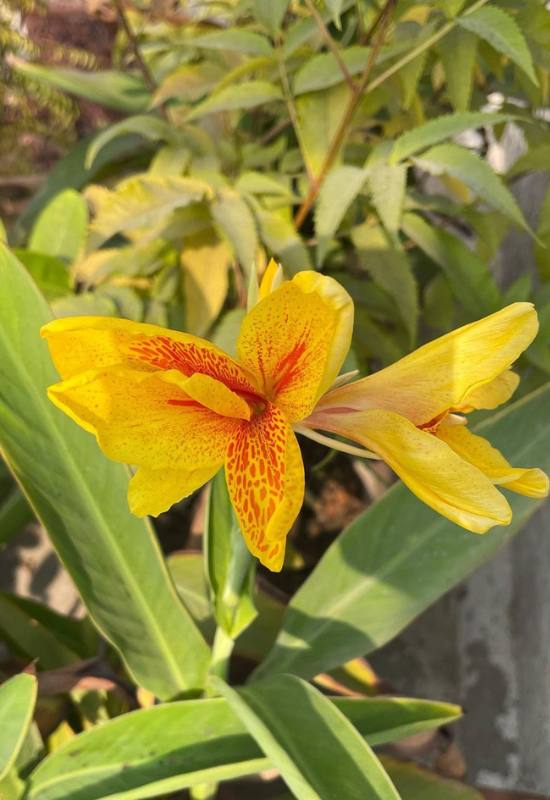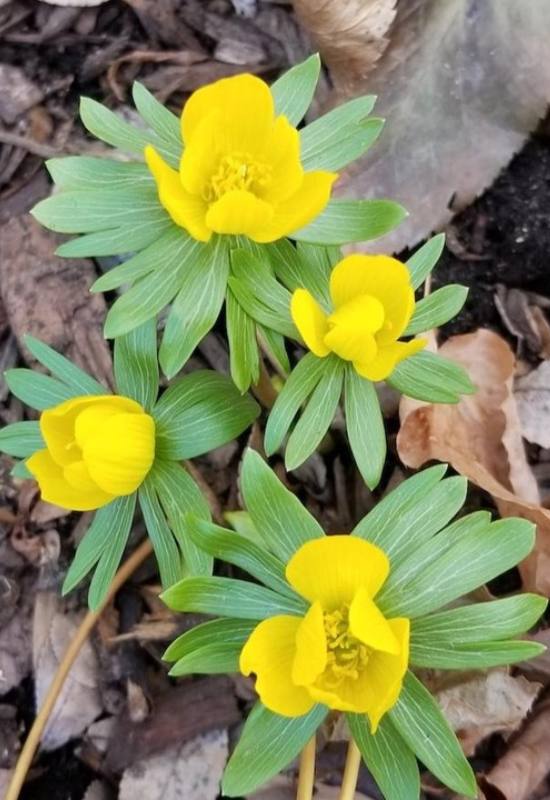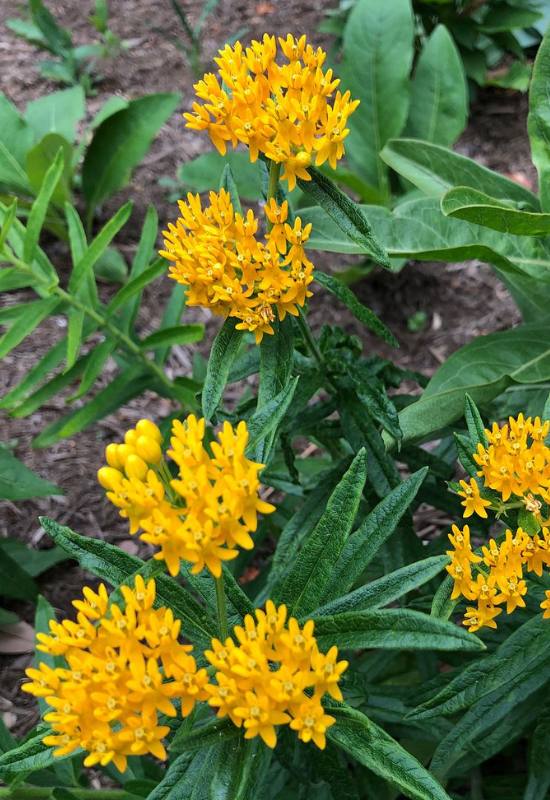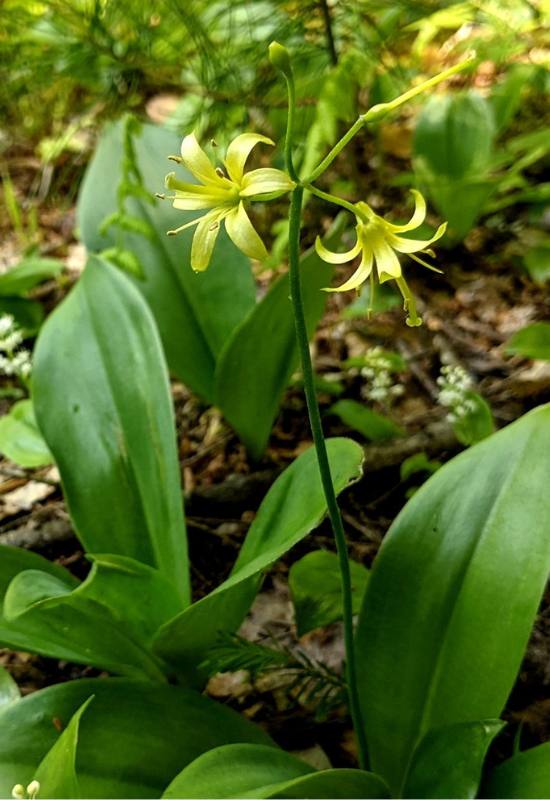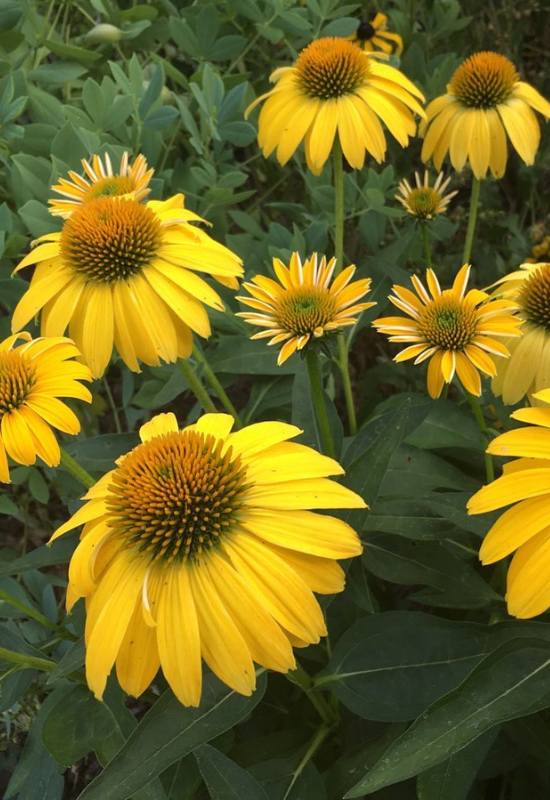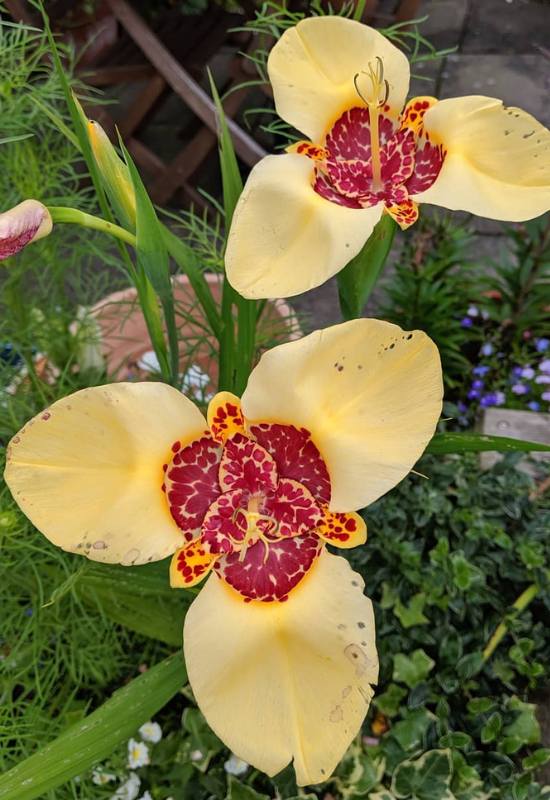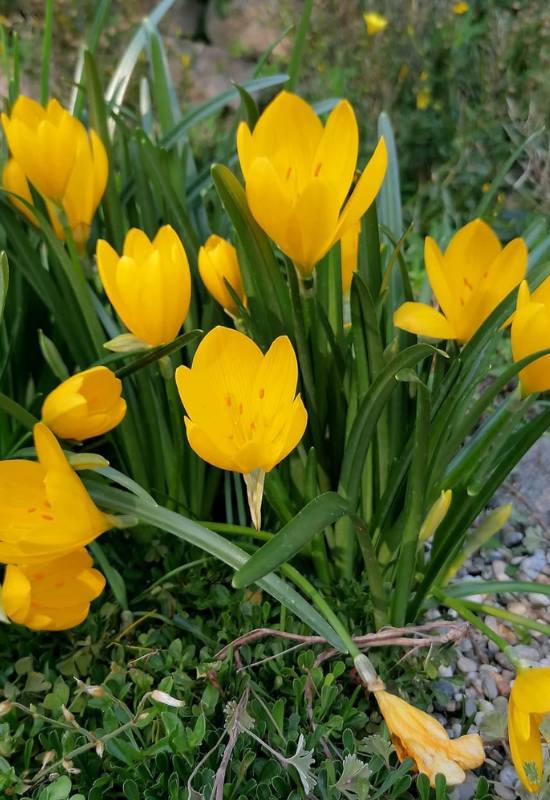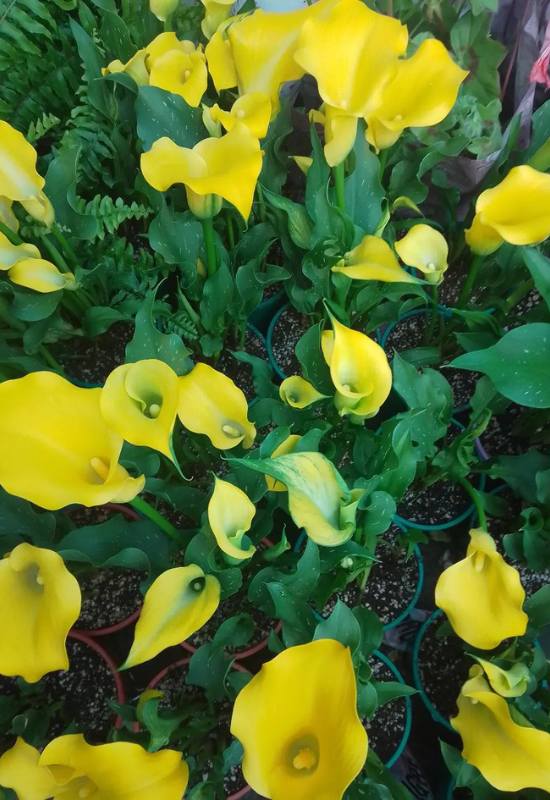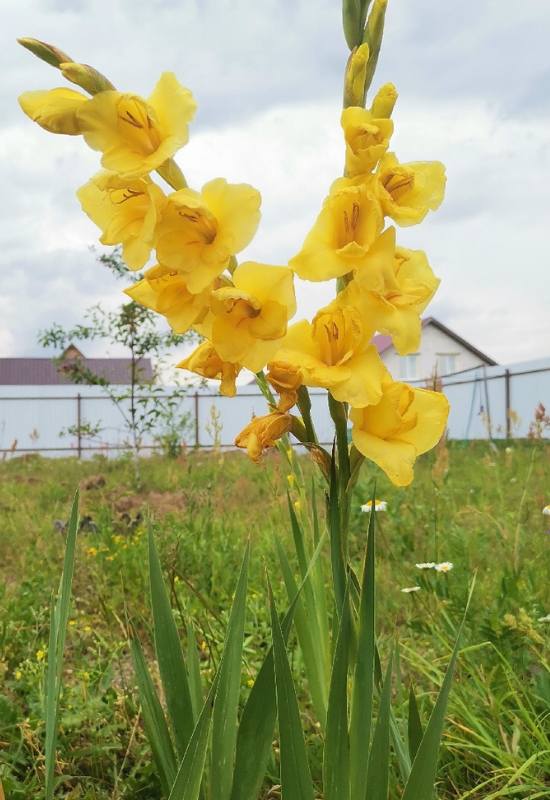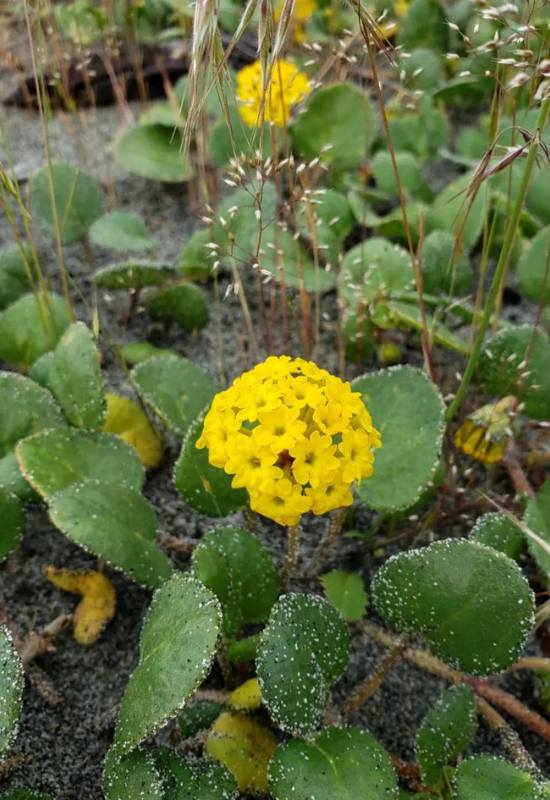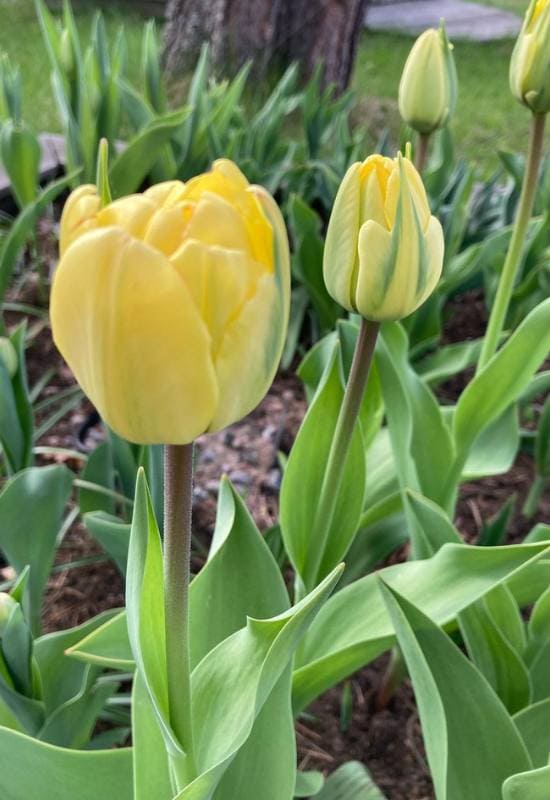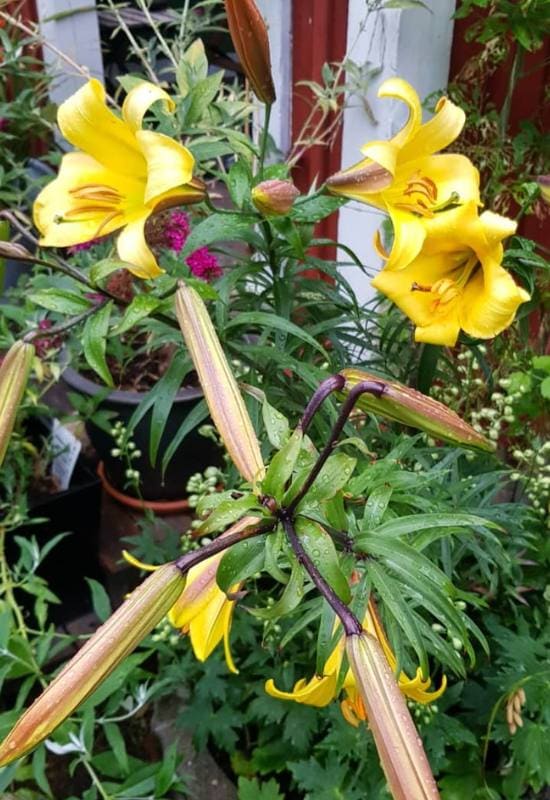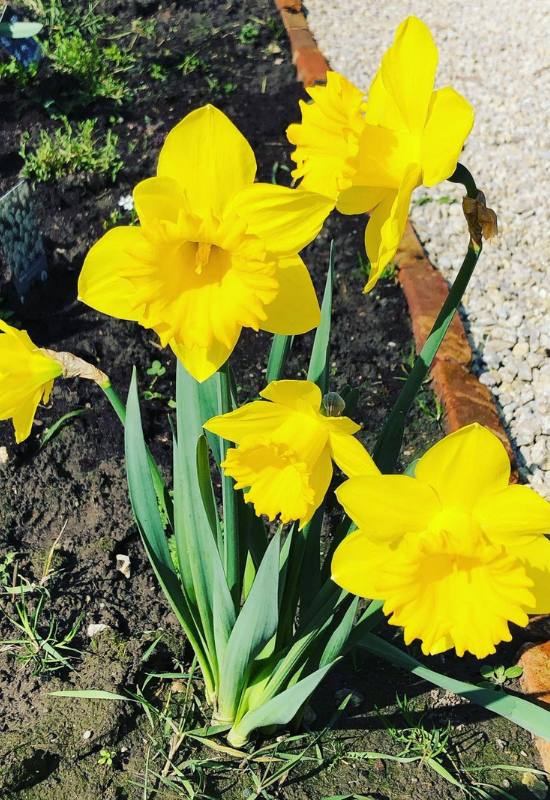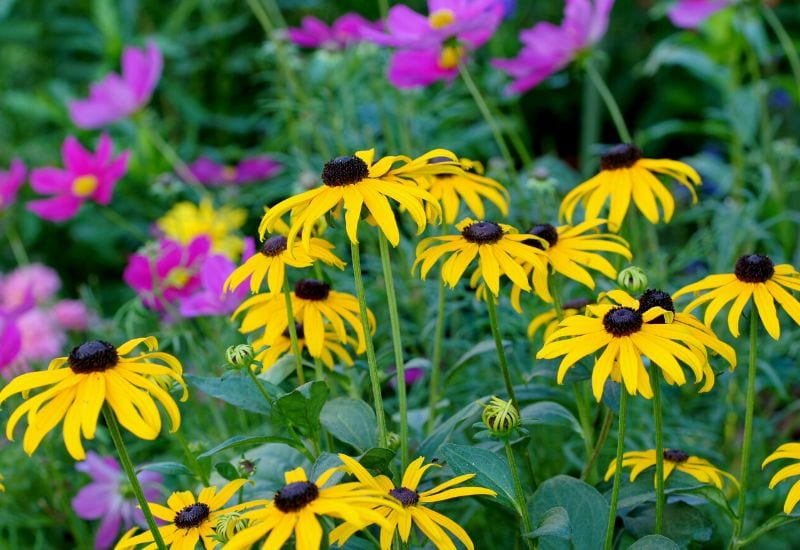
Yellow is vibrancy, energy, brightness and sunshine, and when you find this color in the florid flowers of perennials, you get a heavenly and energetic combination that can brighten up and bring your garden, terrace or yard to life!
And you can have blooms in all its shades, from saffron to lemon, from lime to gold, not just in sunny summers, but also in winter and under the thick canopies of trees. It’s like having a living beam of light on your land!
There are indeed many varieties of perennials with the color of the Sun; the first flowers that spring to mind are daffodils, lilies and tulips, of course. But less known and even unusual species, for dry or wet gardens, for cold or warm climates, can spark up a light of energetic warmth in your beds, borders or even naturalized areas.
And the added bonus is that if you choose perennials, you won’t need to plant them again year after year.
Welcome to a bright and cheerful, energetic journey among some of the most eye catching and easy to grow yellow flowering perennials from all over the world!
You will be blown over by their bright beauty, and let’s start with a few words on the value of yellow blooms in gardens.
Why Choose Yellow Flowering Perennials
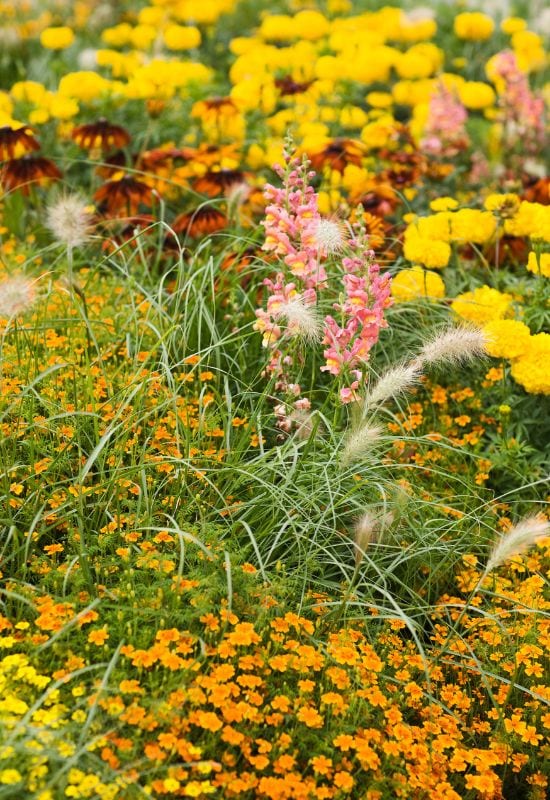
Put simply, yellow is the most energetic color ever. It is as bright as white and as warm as red. Yellow always catches your eye, and it brings you joy. It is the color of the Sun and it literally brings light into your flower beds and borders.
But there is another reason: yellow is arguably the easiest color to combine with others: it goes well with white, orange, red, green and even purple. In some cases, you could also combine it with other colors.
And because perennials don’t die at the end of the year, they will give you this bright and energetic effect year after year. So, let’s get started…
16 Yellow Flowering Perennials for a Bright and Energetic Garden
Yellow is indeed a common color in flowers, so we managed to find some really stunning perennial varieties of this bright color for you.
1: ‘Aztec Gold’ Daylily (Hemerocallis ‘Aztec Gold’)
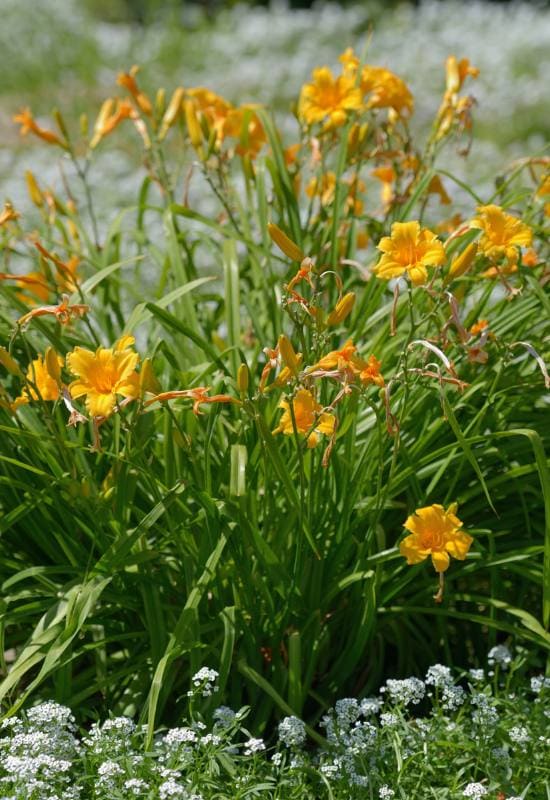
Daylilies are some of the most rewarding perennials ever, and some varieties are yellow as well, ‘Aztec Gold’ being one of the most beautiful. In fact, the blooms have a dark golden shade with a great intensity.
Star shaped and large, about 3.5 inches wide (8.0 cm), with thin petals compared to other cultivars, they will come abundantly just outside the dense foliage.
Each bloom will last one day, but the whole display will last for months on end. The leaves are long, narrow and grass like, forming dense clumps and keeping evergreen in warmer climates.
Ideal for a spot of warm light in borders or tall flower beds, ‘Aztec Gold’ daylily is very easy to grow, and it propagates fast and spontaneously. Given the density of its foliage, it is also good as ground cover and it provides a shelter for small fauna.
2: ‘Citron’ Hellebore (Helleborus x hybridus ‘Citron’)
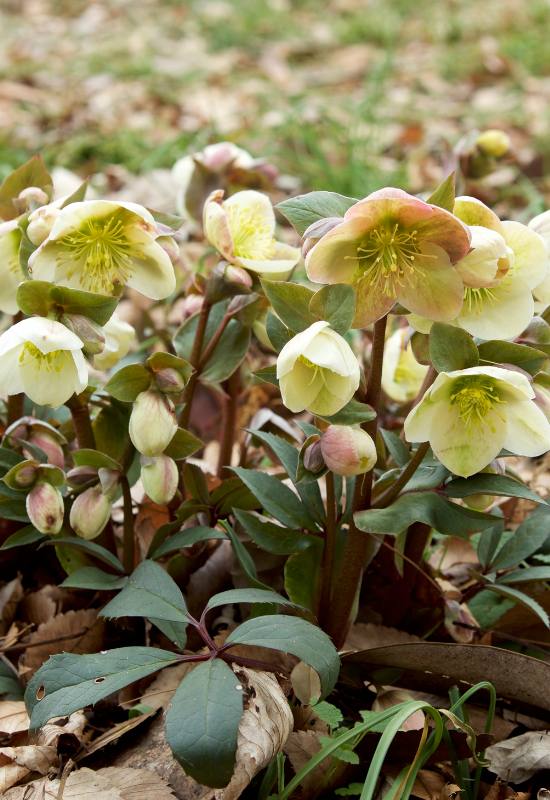
You can even have blooms of the color of the Sun in winter with an amazing perennial like ‘Citron’ hellebore. Its bright yellow flowers in fact will come just when you most need energy and warmth in your garden. And they are big, round and very showy indeed.
They will also brighten up shady spots on your land! With glossy and fleshy mid green palmate leaves, it will also form evergreen clumps with all year round decorative value.
When the seed pods mature, Hellebore will usually self seed, which means that you can buy a few specimens and then let them spread under trees and shrubs.
Excellent for borders, underplanting, and even ground cover, ‘Citron’ hellebore is a vibrant variety you can even allow to naturalize and grow in woodland gardens. Low maintenance yet very showy, it is real value for money!
3: ‘Golden Lucifer’ Canna Lily (Canna ‘Golden Lucifer’)
Living in a warm country means lots of sunshine for your garden and the opportunity to grow exotic perennials like the yellow ‘Golden Lucifer’ canna.
The showy blooms come at the very top of this tall plant, with their intense and bright color, adorned by red spots that add to its warmth and energy.
With long, lance shaped, glossy green foliage that reminds you of tropical forests, this variety really has it all.
Despite its lush appearance, it is low maintenance, and it is very, very generous with its blossoms, which lasts for months till the end of the season. Choose large tubers, for stronger and bigger plants, and to make sure it will flower within a few months from planting.
Ideal for beds and borders, ‘Golden Lucifer’ canna is a must have in Mediterranean and exotic gardens, but adaptable to any informal landscaping style.
4: Winter Aconite (Eranthishyemalis)
This charming tuberous perennial will also give you lovely yellow flowers in the cold season, from spring to early winter.
The cupped, rounded golden blossoms will look up to you from very low down, almost at ground level, and they are framed by a decorative ring of leaflets, like green rays of the Sun.
Deep green, and very suitable for shaded areas, where you can just let it spread spontaneously and enjoy it year after year.
The actual leaves are deeply lobed, finely textured and they appear later in spring, once the blooms are spent. This humble and small variety has won the Award of Garden Merit by the Royal Horticultural Society.
Winter aconite is just perfect for woodland gardens, to plant under trees and shrubs and in naturalized areas.
Having said this, it will also bring life and energy to your beds, borders and containers in the cold season, with little or no effort on your behalf!
5: ‘Hello Yellow’ Butterfly Weed (Asclepias tuberosa ‘Hello Yellow’)
This shrubby looking perennial, ‘Hello Yellow’ butterfly weed is ideal for a splash of bright color in harsh conditions, like dry or salty soil and if you have deer visiting your garden. Herbaceous and low growing, it forms dense clumps of stiff mid green long oval leaves.
When the Sun is strong, in summer, you will see lots of intense dark yellow flowers in clusters. Small and star shaped, they have long petals, like rays, and a little crown in the center.
And you can help Nature by growing this plant: it is essential to the survival of monarch butterflies, that may well come to visit your garden!
Ideal for herbaceous borders and beds, for informal gardens and low maintenance, you could also plant it in a prairie or wild meadow.
6: Blue Bead Lily (Clintonia borealis)
You have a shady, temperate garden but you want yellow blooms and you also want an unusual perennial? Look at blue bead lily. Pale, bell shaped but open, nodding straw yellow flowers will appear on ling stalks for months on end…
In the meantime, you will see rosettes of fleshy, long and pointed bright green leaves at ground level, similar to those of tulips or even orchids.
And then you will find out why it has this strange name. Shiny blue, spherical berries that look like black pearls will come from the blooms, and they will attract birds and little mammals!
Blue bead lily is another yellow flowering perennial you can grow under shrubs and trees, in dark and woodland gardens and even in cold and boggy areas!
7: ‘Ruffled Yellow’ Begonia (Tuberhybrida Begonia ‘Ruffled Yellow’)
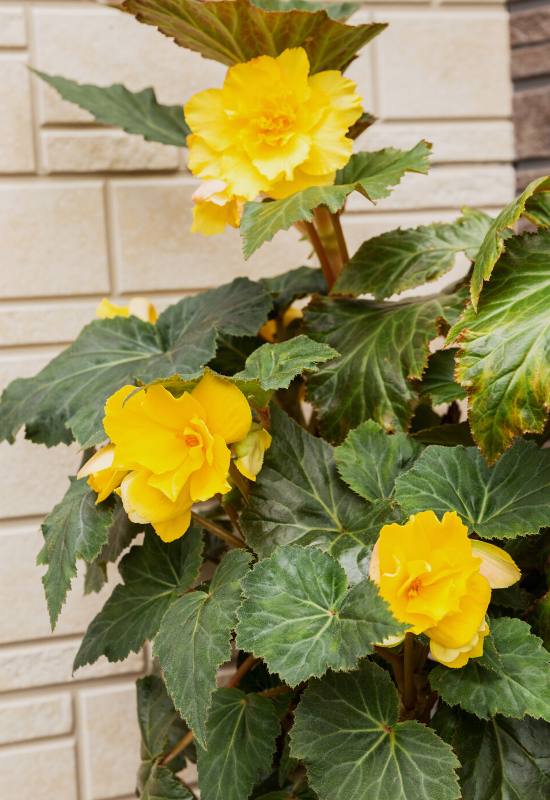
If you want lots of this color in your garden, with super showy blooms, ‘Ruffled Yellow’ begonia is your man! In fact, the large, double and elegantly, almost regularly ruffled flowers reach 9 inches across (22.5 cm)!
The exact hue is between bumblebee and honey, very energetic, intense and impossible to miss.
Now, add the fact that the large, decorative leaves of this variety are very deep green, taking on purple shades, and you will realize how the blossoms stand out in all their brilliant splendor!
‘Ruffled Yellow’ begonia is a perfect cultivar for flower beds and borders, but also containers and hanging baskets. With long lasting blooms, it will bring lots of sunlight to your garden till the end of the season.
8: ‘Sombrero Lemon Yellow’ Coneflower (Echinacea ‘Sombrero Lemon Yellow’)
The perfect sunny perennial is ‘Sombrero Lemon Yellow’ coneflower! This Echinacea variety takes its name from the ray petals, that arch a bit like the famous Mexican and Spanish hat, as if wanting to shade itself. They are also large, about 3 inches across (7.5 cm).
Despite its name, the actual hue is golden, and very bright indeed. What is more, even the central cone is on this range, but rather in the chrome side, almost orange.
The dense foliage at the base offers you a refreshing touch with its long, pointed hairy, gray green leaves that are quite hard and rough to the touch.
‘Sombrero Lemon Yellow’ coneflower is a sunny garden protagonist, for beds and borders but also wild prairies and naturalized areas.
9: ‘Aurea’ Tiger Flower (Tigridia pavonia ‘Aurea’)
‘Aurea’ tiger flower is one of the most eye catching yellow bulbous perennials ever! Exotic and unusual, the flower has three round golden petals, and scarlet to ruby red dots towards the center of the bloom. Each head will only last one day, giving you a great spectacle.
But don’t worry; more will come in quick succession, keeping your garden alive with vibrant energy all through the warm season.
Only suitable to warm countries outdoors, it also has bright green, upright blade like leaves that enhance its unique beauty.
‘Aurea’ tiger flower is a tender perennial, outstanding in flower beds and gardens, but it is quite suitable to containers if you live in coder regions and you cannot resist its magnificent flowers!
10: Winter Daffodil (Sternbergia lutea)
Winter daffodil is not a daffodil, in the sense of Narcissus, nor does it look like one, but it has bright, waxy and golden yellow blossoms. In fact, the flowers look much more like small tulips or large crocuses, cupped and rounded and about 1.5 inches across (4.0 cm).
Looking up on strong looking stalks, they emerge from a lovely tuft of long, fleshy and dark green leaves.
This bulbous perennial’s name is really misleading though… In fact, it does mot even bloom in winter, but fall. It is also a winner of the Award of Garden Merit by the Royal Horticultural Society.
Setting aside all the confusions that winter daffodil causes, this small perennial with bright yellow flower is a real asset in low beds and borders, gravel or rock gardens, and it also naturalizes, spreading as the years go by.
11: ‘Golden Chalice’ Calla Lily (Zantedeschia ‘Golden Chalice’)
‘Golden Chalice’ is one of the best yellow flowering canna lily varieties. The spathes are of the brightest gold color ever, broad, well shaped and very balanced indeed. The spadices are the same shade, for a continuous effect. These explosions of energy and light grow on elegant talks that rise above really spectacular foliage.
In fact, the luxuriant arrow shaped upward looking leaves are mid green, glossy and with a multitude of white to pale green spots on them.
While the blooms look like the daylight Sun, the leaves look like the sky at night! And the blossoms are long lasting, each for weeks and from summer to fall!
‘Golden Chalice’ is an exceptional yellow flowering perennial variety for beds, borders and containers, and it also loves to grow near ponds and streams – excellent for water gardens!
12: ‘Charisma’ Sword Lily (Gladiolus ‘Charisma’)
‘Charisma’ is not just one of the sword lilies with the strongest, brightest yellow color, it is one of the most showy you will ever see.
The large, elegantly ruffled and eye catching blooms open from the bottom of the stalk forming a very dense, tightly packed and well arranged inflorescences.
Rising high above the long, thin, pointed and mid green foliage that give this perennial its name, it provides great vertical accent in gardens, and this variety is quite tall indeed.
In fact, it will bring its sunny blossom almost up to eye level. For this reason, it makes an outstanding cut flower as well!
For beds and borders, growing ‘Charisma’ is like having a long, vibrant yellow flame in your garden. While it is not cold hardy, if you remove the corms from the soil, you can plant them again year after year.
13: Yellow Sand Verbena (Abronia latifolia)
Yellow sand verbena is a trailing perennial with very intense golden blooms. If you want their color to spread wide over the ground, you have found a great ally for your garden.
Coming in dense globular clusters in spring, trumpet shaped and with large open mouths (which is what you will notice), they are also fragrant. And in some regions they even blossom all year round!
The fleshy leaves are broad, roughly round, glossy and quite decorative. This native of California, Oregon, Washington and British Columbia has a final added bonus for you… Its tuberous roots are also edible and quite tasty.
Yellow sand verbena is not just useful and good to eat, apart from bringing light to your garden, being ideal as a fast growing ground cover variety, it is also excellent against soil erosion, on sandy banks and slopes!
14: ‘Akebono’ Darwin Hybrid Tulip (Tulipa ‘Akebono’)
My favorite yellow tulip is ‘Akebono’ an exceptional Darwin hybrid variety… Its semi double blooms are broad and globular, rather than long, and they reach about 3.5 inches across (8.5 cm). The petals are rounded, dented in the middle and in a range between canary and golden to butter yellow.
But that’s not all! They also have a few thin and gentle green lines on the outside and the margins are defined by a very delicate orange line.
It is a late flowering cultivar that displays this bright blossom above the fleshy, long and broad, pointed and partly upright leaves that grow at the base of the stalk.
Of course you can grow ‘Akebono’ Darwin hybrid tulip for cut flowers, but a nice place in beds and borders will also do it justice, and it will add a very elegant but vibrant touch to them as well!
15: ‘Golden Splendor’ Trumpet Lily (Lilium ‘Golden Splendor’)
We could not miss out a magnificent lily variety like ‘Golden Splendor’ from our shortlist of yellow flow flowering varieties! Its big blooms, up to 6 inches wide (or 15 cm) and 8 long (20 cm) are spectacular, with their backward curling petals, bright gold yellow on the inside, where you will also see orange to red anthers.
Highly fragrant, they also display an interesting purple coloring on the outside, which makes the sunny center even more eye catching. What’s more, this cultivar is known for its generosity: a single bulb will produce up to 20 flower heads!
The long stalks have lovely pointed leaves on them, regular and thin, and it is a winner of the Award of Garden Merit by the Royal Horticultural Society.
Excellent as a cut flower, ‘Golden Splendor’ trumpet lily can be a real sunny protagonist in borders and beds, and it is also suitable for containers.
16: ‘Dutch Master’ Trumpet Daffodil (Narcissus ‘Dutch Master’)
We could only conclude our exploration of perennials with the color of the Sun with a classic spring yellow flower, daffodils, and with an heirloom, classic and fully yellow trumpet variety: ‘Dutch Master’! With blooms that open to about 4 inches across (10 cm) and the same in length, it offers a very harmonic flower shape.
In fact, ‘Dutch Master’ is what we picture in our mind every time we think “daffodil”. The scent too: fresh and heady at the same time…
The long and narrow fleshy leaves have an upright habit, and they frame the floral display of a famous winner of the Award of Garden Merit by the Royal Horticultural Society!
Introduced back in 1938, ‘Dutch Master’ trumpet daffodil has been a yellow flowering protagonist in garden borders and flower beds for almost a century. Also great for cut flowers, it has a final advantage: it naturalizes very easily and it spreads fast!
Yellow Flowering Perennials for Energy and Light in Your Garden
We have found varieties of yellow flowering perennials to bring light, energy and vibrancy to your garden all year round, even in winter. This is just a selection of some of the best

Written By
Amber Noyes
Amber Noyes was born and raised in a suburban California town, San Mateo. She holds a master’s degree in horticulture from the University of California as well as a BS in Biology from the University of San Francisco. With experience working on an organic farm, water conservation research, farmers’ markets, and plant nursery, she understands what makes plants thrive and how we can better understand the connection between microclimate and plant health. When she’s not on the land, Amber loves informing people of new ideas/things related to gardening, especially organic gardening, houseplants, and growing plants in a small space.

